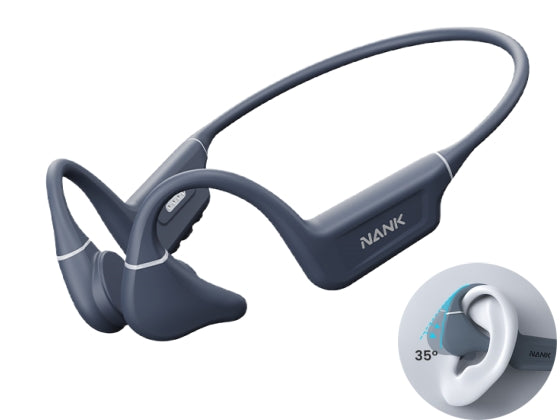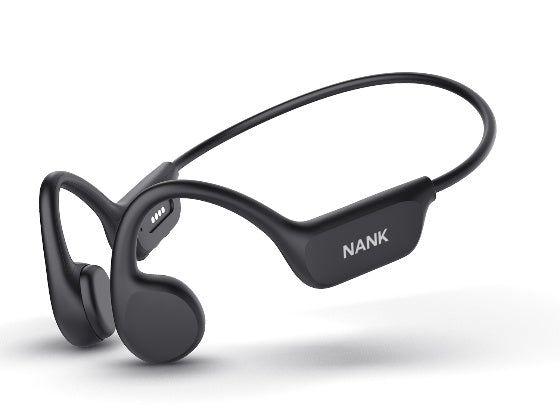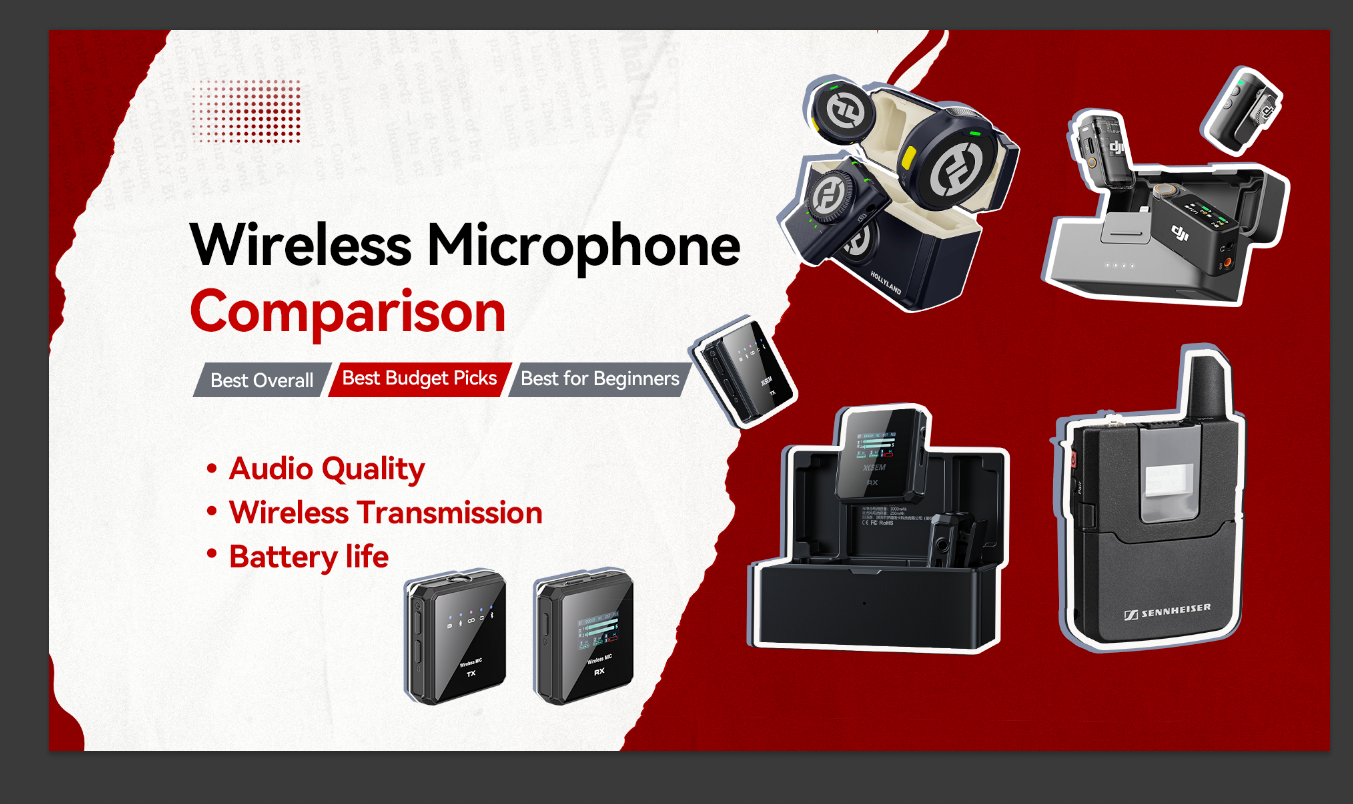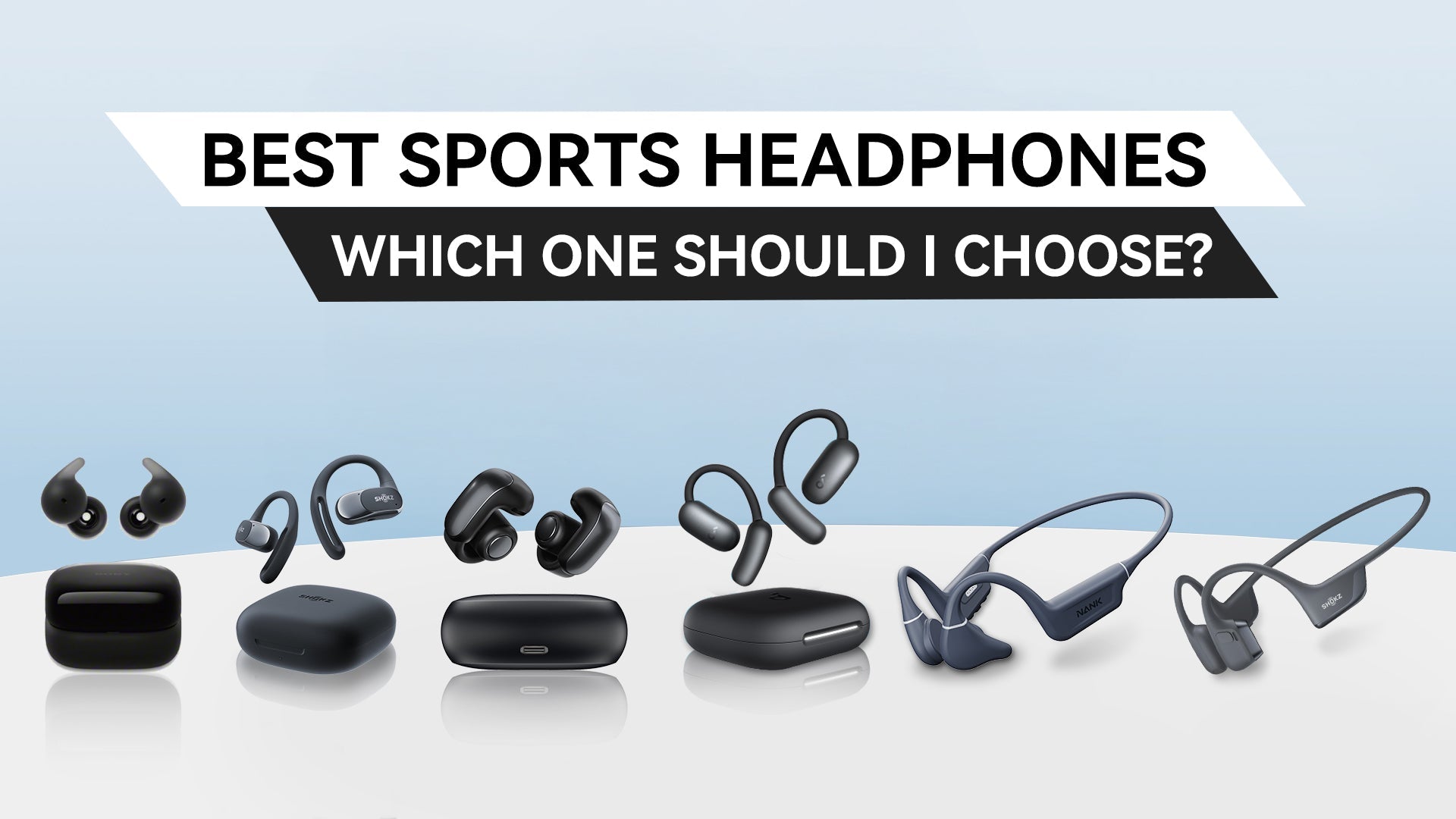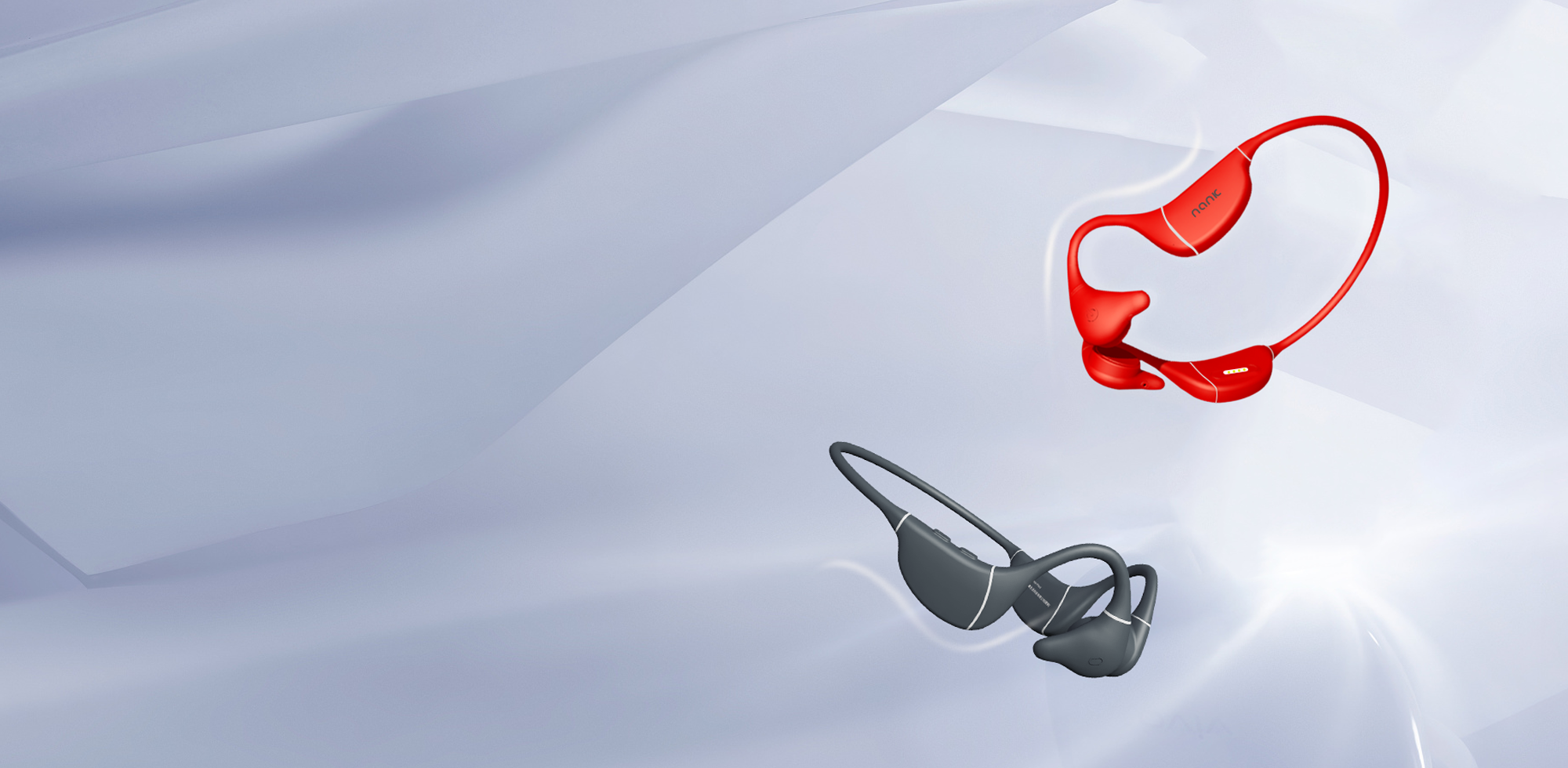Introduction
Whenever we are ready to feel the refreshing water in the pool or embrace the sea water, do we always feel that something is missing? That's right, music. Whether it is outdoor running or indoor sports, or even daily commuting, we are used to being surrounded by music, which allows us to immerse ourselves in sports or enrich our sports environment and reduce fatigue. And these are exactly what our good sports partner, headphones, are responsible for transmitting and providing.
So, we also want to enjoy personalized music while swimming instead of listening to the same music played in the swimming venue (if any), and we start to look for a pair of high-quality swimming headphones. But if you are buying swimming headphones for the first time, you may be confused about what aspects to evaluate the headphones. Even in the process of your search, you will find that there are two schools of thought in a series of popular swimming headphones, one is the bone conduction headphone advocates, and the other is the in-ear earplug supporters. This can make your choice even more challenging.

Therefore, this article aims to explain in detail how to select the best swimming headphones, including explanations and distinctions of related terms. Additionally, we will address some frequently asked questions about using headphones in water and recommend several cost-effective swimming headphones that we believe meet the criteria, to offer our readers some guidance and suggestions.
- 1. What are swimming headphones?
- 2. Bone-conduction VS.In-ear headphones for swimming
- 3. How to choose the best waterproof headphones for swimming?
- 4. Our Review Standards
-
5. Recommended wireless headphones for swimming
- 5.1 Best underwater sports headphone: Nank RUNNER DIVER 2 PRO
- 5.2 Best Bluetooth Swimming Headphone: H2O Audio Interval Swim
- 5.3 Best Multifunction Headphone: Shokz OpenSwim Pro
- 5.4 Best Long-lifetime Headphone: Tayogo Waterproof Mp3 Player
- 5.5 Best value swimming headphone: FINIS Duo - Underwater MP3 Player
- 6. Conclusion
- 7. FAQ
What are swimming headphones?
Swimming headphones are audio devices designed for underwater sports, which can provide music or audio content to underwater enthusiasts in scenes such as swimming and diving. Traditional headphones often fail in these environments due to water interference and insufficient waterproofing. Swimming headphones are different from ordinary headphones. The core of swimming headphones is waterproof performance and wearing stability, while considering the adaptability of sound quality and the underwater environment.
Bone-conduction VS.In-ear headphones for swimming

Currently, the market's swimming headphones are divided into two styles: bone conduction design headphones and in-ear earbud headphones. Here are the differences between them and their respective advantages and disadvantages:
- Bone conduction headphones: a safe choice for open ear canals
How it works: These headphones transmit sound vibrations through the skull, bypassing the eardrum and transmitting audio through the inner ear.
Suitable for: public pool users, open water enthusiasts, people with sensitive ear canals.
Advantages:
Situational awareness: By keeping the ear canal open, they can keep you aware of the surrounding environment, which is a safety feature in open water.Comfort: No need to insert into the ear canal, more comfortable to wear for a long time.Reduced water interference: Since they don't rely on the ear canal, there is less risk of water interfering with the audio signal.
Limitations:
Sound quality: Offer less bass response and a more "open" sound than in-ear headphones.Fit: Making sure they stay in place during vigorous swimming can be challenging.
- In-ear earbud headphones: The price of immersive sound
How it works: These headphones fit tightly into the ear canal, transmitting sound directly to the eardrum.
Suitable for: Swimmers who seek detailed sound quality, underwater meditation, or long-distance trainers.
Advantages:Sound quality: They generally offer superior audio fidelity, as well as better bass and noise isolation.Secure fit: If they fit properly, they are less likely to move during swimming.
Limitations:
Comfort: Long-term wear may compress the ear canal, and it is recommended not to use them for more than 1 hour at a time.
Situational awareness: They can block out surrounding sounds, which can be a safety hazard in open water environments.
In general, choosing in-ear or bone conduction style swimming headphones will depend on your personal preferences, swimming environment, and your priorities for sound quality and situational awareness.So, beyond our clarification of the style of headphones, what other points do we need to consider or be aware of when choosing swimming headphones?
How to choose the best waterproof headphones for swimming?
1. IP rating: waterproof vs water-resistant headphones
First of all, we need to understand the difference between waterproof headphones and water-resistant headphones, which are prefixed by two different terms, although this is obvious to technical enthusiasts. However, most people think that the two terms have the same meaning, just different ways of expression, and even some manufacturers promote their products in this way, confusing the two concepts. This can easily mislead consumers and may have a disastrous impact on their equipment selection. So we need to pay attention to the IP code (Ingress Protection) to avoid the "pseudo-waterproof trap".
- Waterproof Headphones: Provide a high level of waterproof protection and support underwater use. The IP level will reach IPX7-8 and above (IPX7: 1 meter deep water immersion for 30 minutes; IPX8: 1.5 meters and above water depth), so it is suitable for swimming or diving.
- Water-Resistant Headphones: More waterproof protection is provided on the surface of the headphones. It can only resist a small amount of water stains (such as sweat or rain). The IP level is around IPX4-5, so it does not support full immersion in water. They are more suitable for daily commuting and jogging as well as indoor gym workouts.
In general, the terms "waterproof" and "water-resistant" refer to different levels of protection of headphones against water. When choosing headphones for specific activities, distinguishing them will help us make the right choice of headphones. For example, when we choose swimming headphones, we mainly search for headphones with the term “waterproof”, and pay attention to sports headphones that must be above IPX7.

2. Sound quality and function: scientific adaptation of underwater hearing
Unlike sound propagation on land, underwater sound propagation is more prone to sound quality distortion without external technical equipment. Therefore, when choosing swimming headphones, we can pay extra attention to headphones with underwater exclusive sound optimization and patented acoustic technology.
In addition, it is necessary to pay attention to the core functional requirements of headphones: Bluetooth connection and local storage. Many people are more or less troubled by the convenience of music access and the stability of Bluetooth connection. Even the upgraded Bluetooth version 5.3, which can stably transmit music signals over long distances on land, cannot guarantee long-distance continuous connection during underwater activities.
Consequently, most swimming headphones are equipped with an MP3 mode, allowing you to listen to audio content offline. Hence, the internal storage capacity of the headphones becomes quite significant. The higher the GB storage capacity, the more audio content you can download. For instance, an 8GB storage can accommodate over 2,000 songs.

3. Continuity and charging: goodbye to power outage anxiety
The range of the headset is also what we need to pay attention to, the range configuration of high-quality headphones, which allows us to charge once a week to avoid power outages during underwater sports. Besides, some newly upgraded headset brands are also equipped with a fast charging function, charging for 10 minutes can be used for 1 hour, which greatly improves the convenience we need.
Moreover, various charging methods have distinct points of application. For instance, the magnetic charging method is engineered with robust corrosion resistance, particularly noticeable when utilized in saltwater environments. On the other hand, wireless charging is designed for convenience, although it comes with a higher cost, which is more evident in some premium headphone models.
When choosing a charging method, you can avoid models with exposed Type-C or Micro-USB ports (easy to get into the water) and choose those with magnetic/wireless charging ports.
4. Durability and after-sales service: guaranteeing the experience of use
Swimming-friendly headphones will work under prolonged water flow, so please choose those with anti-corrosion materials and anti-attenuation technology. In addition, we can also pay attention to the warranty period of waterproof parts (≥1 year is recommended), and some brands provide water-filled replacement service (e.g., Shokz's waterproof warranty).

Our Review Standards
Of course, in addition to the above key references, there are other factors to consider, such as price budget, headphone appearance, and design. In general, the best swimming headphones need to be waterproof, durable and secure enough to ensure that they stay in place while you're swimming and provide a reliable aid to your workout.
We have also reviewed some of the more popular swimming headphones on the market (we first recommend buying and picking up swimming headphones on sites like Amazon, eBay, Walmart, and Google's natural search browser). The review was conducted in the following manner:
1. Test the waterproofness of the headphones in the pool to get a feel for the fit, underwater sound quality, and durability.
2. Testing the headphones for music download accessibility and stability of the Bluetooth underwater connection
3. Not only take our feelings, but we also collect feedback from users of various platforms for comprehensive consideration.Finally, we have selected 5 quality swimming headphones that basically meet the above selection criteria and have unique advantages as reference. Let's embark on this journey together.
Recommended wireless headphones for swimming
Best underwater sports headphone: Nank RUNNER DIVER 2 PRO
Recommendation:
If you are a swimming enthusiast or frequently engage in underwater sports, then investing in a pair of high-quality headphones with the highest waterproof rating is worth considering.
These headphones are specifically designed for underwater use, boasting an impressive IPX9 waterproof rating. The design, coupled with nano-waterproof coating technology and ultrasonic welding, ensures that you can swim in various environments and dive to a depth of 10 meters without issue. The magnetic charging port design provides a secure seal, making the headphones resistant to water ingress.These headphones offer both Bluetooth connectivity and MP3 mode, and support seamless pairing with both iOS and Android devices, providing high switching flexibility.
Compared to swimming headphones with earplugs, Nank's bone conduction design ensures that your head will not be pushed or dislodged by water waves when moving, flipping, or pushing against the wall in the water. With an adjustable silicone strap, they are comfortable to wear and ensure a personalized fit. Additionally, they come with a pair of earplugs for swimmers to protect their ear canals upon entering the water.
Simultaneously, in terms of converting music downloads to MP3 mode, they have also released a specific tutorial for downloading music from Spotify to headphones, addressing the common issue of being tired of searching for various converters or not being able to organize multiple music tracks.

| Pros: | Cons: |
| Long battery life, 10 hours | Music is sometimes distorted underwater |
| High waterproof rating, suitable for various underwater activities | Bluetooth mode does not support usage underwater. |
| 32GB built-in storage, can download massive audio contentl | |
| Bone conduction design, high safety |
Best Bluetooth Swimming Headphone: H2O Audio Interval Swim
Recommendation:
If you prioritize underwater sound quality and prefer using an Apple Watch to stream music via Bluetooth, then this headset is undoubtedly your top choice. The headset's unique Integrated Goggle Loops design enables you to connect the Apple Watch directly to the Interval and then attach it to the goggle strap effortlessly. This allows for seamless swimming while enjoying Apple Music streamed via Bluetooth, avoiding the hassle of downloading or converting music into MP3 format. Its convenience is unparalleled.
Additionally, this headset offers an open bone conduction design as well as in-ear earplug styles, catering to various preferences for wearing methods and appealing to technology enthusiasts. We opted for the in-ear design, and upon receiving the product, we found multiple earplug sizes available for replacement, ensuring a high level of comfort for the wearer.

| Pros: | Cons: |
| You have the freedom to choose between bone conduction open earphone designs and in-ear bud designs. | Battery life is shorter compared to other swimming earphones, lasting only 6 hours, which results in frequent charging. |
| Equipped with the bass amplifier Surge S+, which ensures good sound quality. | You must wear your Apple Watch on your goggles, which means you cannot track lap counts.l |
| Various earplug sizes are available for selection, providing a high degree of comfort. | The earphone's plastic material is quite thin, and some users have reported quality issues after a period of use. |
| Compatible with Apple Watch, allowing direct Bluetooth connection for music playback, even underwater. |
Best Multifunction Headphone: Shokz OpenSwim Pro
Recommendation:
If you're looking for a headset that's not just for swimming but also offers additional features, such as compatibility with running, then this is the best all-around option. The open-design bone conduction headphones are both comfortable and safe, enabling you to enjoy high-quality audio in the water while staying aware of your surroundings. The headphones are made from Nickel-Titanium Alloy and Silicone, ensuring a light and comfortable feel. They also come with Bluetooth and MP3 modes, allowing for seamless switching during activities like running or swimming.
Additionally, the built-in 32GB storage capacity is ample for downloading a vast array of music and podcast content. Another noteworthy feature is that the headphones will alert you with a voice prompt about the remaining battery power when you turn them on. This helps you remember to charge them in time to avoid running out of power during your next swim. The design of the three physical buttons is straightforward and easy to use, making the headphones very user-friendly.

| Pros: | Cons: |
| Versatility, suitable for both running and swimming | Bluetooth signal will be interrupted underwater |
| 32GB built-in storage, can download massive audio content | Bluetooth connection does not support long distance on PC, and is easily interrupted after exceeding one meter. Reconnecting Bluetooth to a phone after connecting to a PC can be challenging. |
| Comfortable to wear, seamlessly combined with swimming caps and goggles or sunglasses and bicycle helmet | The MP3 mode lacks folder and playlist functions. |
| The price is expensive |
Best Long-lifetime Headphone: Tayogo Waterproof Mp3 Player
Recommendation:
If you're seeking a headset compatible with a variety of audio file formats, then this headset is the ideal choice. The Tayogo Waterproof MP3 Player supports numerous formats, including those from iTunes and downloaded audiobooks, such as MP3, WMA, OGG, APE, FLAC, WAV, AAC-LC, and m4a. Furthermore, it offers two playback modes: you can listen to your favorite music via MP3 or FM.
The sound quality of this player remains excellent, even when submerged in water, matching the quality of music listened to on land. The magnetic charging design enhances the headset's sealing, reducing the likelihood of water ingress in wet environments. In terms of comfort, the headset is made of silicone, making it very comfortable to wear around the neck. It also features two wearing options, allowing users to choose between wearing it on the head or hanging it around the neck, depending on the activity.

| Pros: | Cons: |
| Affordable, cost-effective | No Bluetooth connectivity, MP3 only |
| Long battery life, up to 20 hours of continuous use | Limited internal storage, with only 8GB available. |
| Compatible with a wide range of media file formats, easy to download audio content | Some users reported that the headphones feel a bit bulky and uncomfortable for non-swimming activities. |
Best value swimming headphone: FINIS Duo - Underwater MP3 Player
Recommendation:
If you are a swimmer with a limited budget and are dedicated to underwater sports, then this headset is for you. It is an MP3 player designed specifically for swimming, lacking Bluetooth or mobile phone connectivity, which allows you to completely eliminate distractions and enjoy swimming without the worry of managing your phone or device. The ability to load music directly onto the device makes it a simple and hassle-free solution.The earphones are designed to wrap around the back of the head, providing a secure fit while swimming. They remain in place well, even during vigorous movements such as turning over or sprinting.Despite being bone conduction, the sound quality underwater is impressive, with clear sound and moderate volume. It is noticeably better than many traditional swimming in-ear headphones.

| Pros:Comfortable and secure fitl Suitable for focused swimming exercise activitiesl Cheap and cost-effective | Cons:No Bluetooth connection function, lack of streaming source diversity.l The memory capacity is very small and cannot support large-capacity audio content downloadsl The battery life is weaker than the above headphones, and the number of charging times is high |
Conclusion
Swimming headphones are the "invisible coach" for underwater sports. Utilizing waterproof technology, innovative sound transmission methods, and scenario-based design, they address the issue of traditional headphones not functioning underwater. When selecting swimming headphones, consider factors such as waterproof rating, fit, sound quality, and storage capacity to ensure they meet your specific swimming needs and preferences, allowing music to enhance every stroke!

FAQ
Q: Can swimming headphones make calls underwater?
A: Most do not support it, because the Bluetooth signal is blocked underwater and needs to be paired with special equipment.
Q: What waterproof level do swimming headphones need to achieve? What is the difference between IPX7 and IPX8?
A: Swimming headphones should possess a minimum IPX8 certification, indicating that they can withstand immersion in water at a depth of 1.5 meters for over 30 minutes. In contrast, IPX7 supports submersion in water up to 1 meter for 30 minutes, making it suitable for shallow water activities. However, high-frequency swimming may lead to a reduction in their sealing capability.
Q: Can Bluetooth headphones be used underwater? Why are models with local storage recommended?
A: Bluetooth signals will be greatly attenuated underwater. Even Bluetooth-enabled headphones (such as Jabra Elite 8 Active Gen 2) can only be used on the surface of the water. It is recommended to choose headphones with built-in storage when swimming:
Recommended models:
Nank Runner Diver2 Pro: 32GB storage, dual-mode connection (Bluetooth + MP3)
Tayogo Waterproof MP3: One-button operation design, can be used without a mobile phone
Q: How do waterproof swimming headphones work?
A: Waterproof swimming headphones typically use bone conduction or in-ear designs. Bone-conduction headphones transmit sound vibrations through your cheekbones or skull to your inner ear, leaving your ear canals open. In-ear headphones have waterproof seals that prevent water from entering the device while delivering sound directly through the ear canal. Both types are designed with materials that can withstand exposure to water.
Q: Can I use waterproof headphones for open-water swimming?
Q: Can I use waterproof headphones for open-water swimming?
A: Yes, you can use waterproof headphones for open-water swimming, but it's essential to choose a model that stays securely in place during the swim and allows you to hear ambient sounds for safety.
Q: How do I maintain my waterproof headphones for swimming?
A: To maintain your waterproof headphones, follow these steps:
l Rinse them with fresh water after each swim to remove chlorine or saltwater.
l Dry them with a soft towel and let them air dry fully.
l Store them in a cool, dry place when not in use.
l Avoid exposing them to extreme heat or direct sunlight, as it can damage the electronics.
l Regularly check for any visible signs of wear and tear, especially on seals and connectors.

